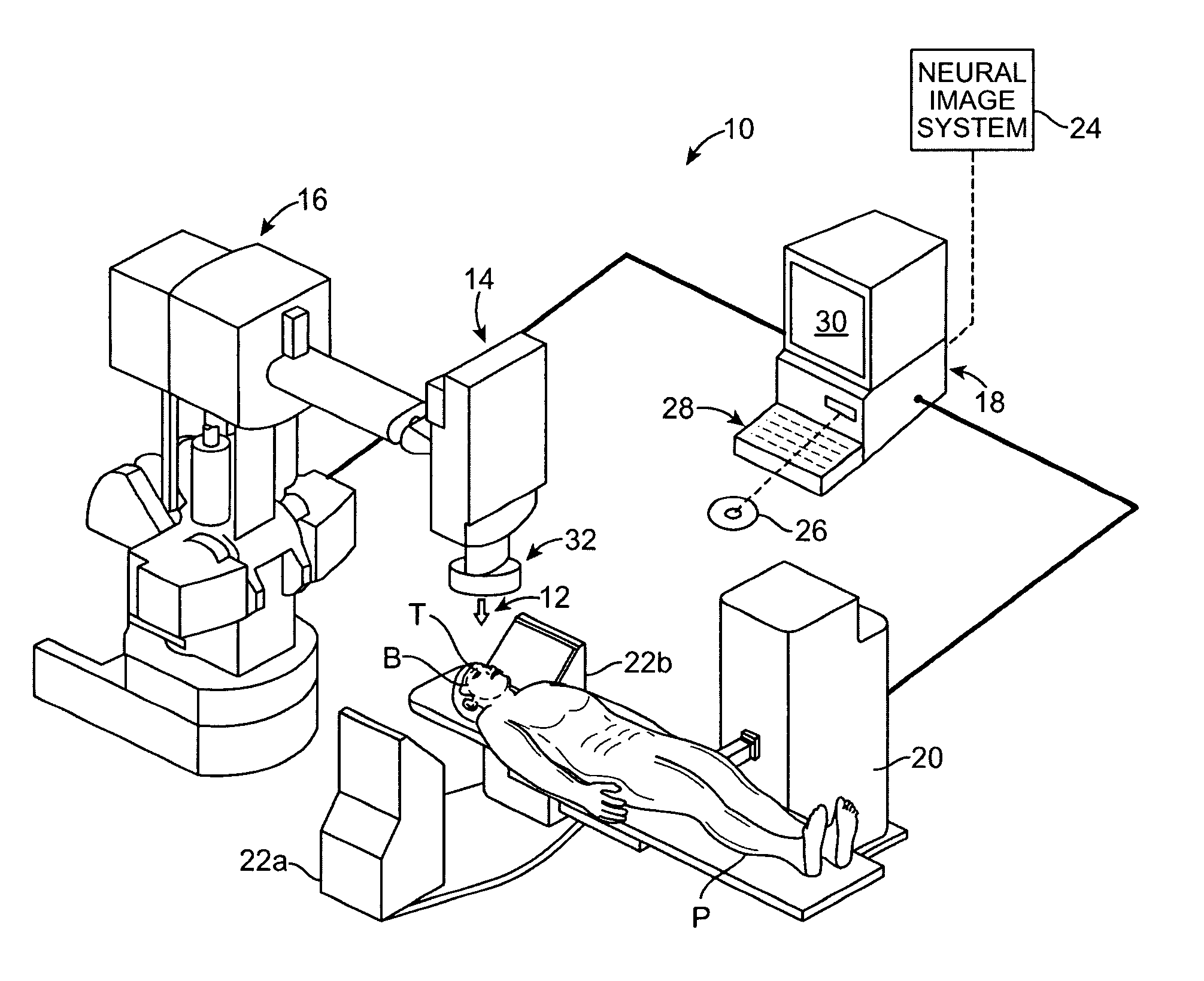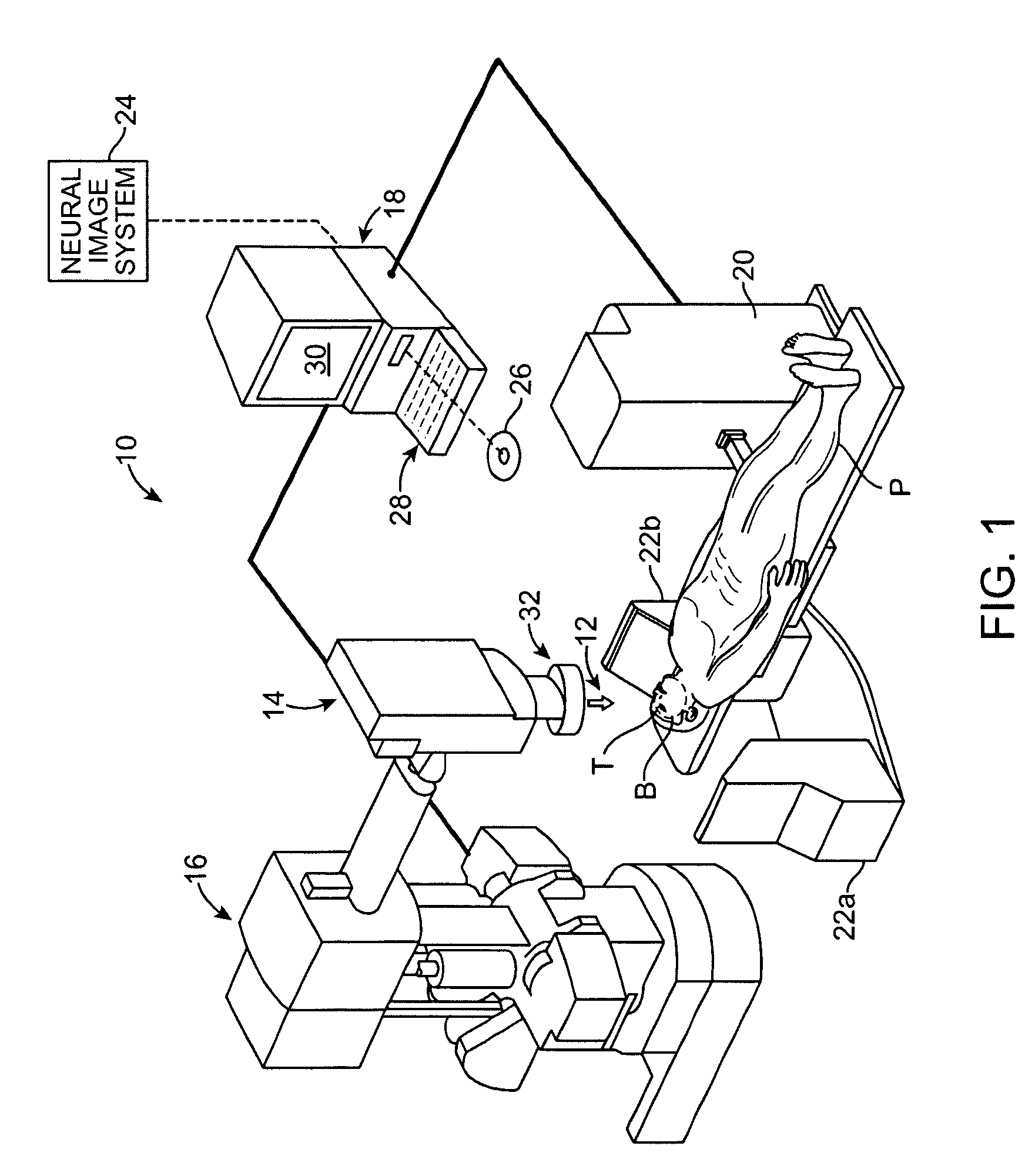Radiosurgical neuromodulation devices, systems, and methods for treatment of behavioral disorders by external application of ionizing radiation
a neuromodulation device and neuromodulation technology, applied in the field of neurological) treatment devices, systems, and methods, can solve the problems of provoking deleterious volitional behavior of patients, necrosis outside the anatomical boundaries of the target may be quite limited or even negligible, and achieve the effects of reducing the risk of neuronal hyperactivity, and modulating the level of neural activity
- Summary
- Abstract
- Description
- Claims
- Application Information
AI Technical Summary
Benefits of technology
Problems solved by technology
Method used
Image
Examples
Embodiment Construction
[0031]The present invention generally provides improved medical systems, devices, and methods. Exemplary embodiments of the invention provide improved radiosurgical techniques and systems, particularly for treatment of behavioral disorders, including depression, Obsessive-Compulsive Disorder (“OCD”), and addiction. Treatments are also provided for additional medical and / or psychiatric conditions, particularly those that are associated with neural activity levels in identifiable neural circuits of the brain, including hyperphagia and obesity. As treatments described herein may rely on the delivery of radiation transmitted from a source outside the patient, through the skull and any intervening tissues, and concentrated within the target, these treatments may optionally avoid the surgical trauma associated with accessing deep brain tissues. Alternative embodiments could, however, combine non-invasive methodologies described herein with minimally invasive or even traditional open surgi...
PUM
 Login to View More
Login to View More Abstract
Description
Claims
Application Information
 Login to View More
Login to View More - R&D
- Intellectual Property
- Life Sciences
- Materials
- Tech Scout
- Unparalleled Data Quality
- Higher Quality Content
- 60% Fewer Hallucinations
Browse by: Latest US Patents, China's latest patents, Technical Efficacy Thesaurus, Application Domain, Technology Topic, Popular Technical Reports.
© 2025 PatSnap. All rights reserved.Legal|Privacy policy|Modern Slavery Act Transparency Statement|Sitemap|About US| Contact US: help@patsnap.com



